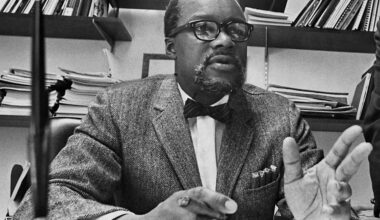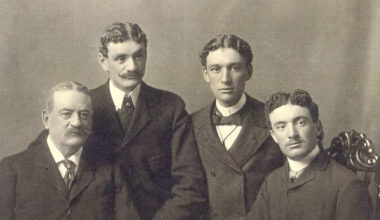Basic Information
| Field | Detail |
|---|---|
| Full name | Ruby Alline Bullock |
| Also credited as | Aillene Bullock |
| Later name | Ruby Alline Selico |
| Born | December 1, 1936 |
| Birthplace | Haywood County, Tennessee, USA |
| Died | September 4, 2010 (age 73) |
| Place of death | Valley Village, California, USA |
| Occupations | Songwriter; music-business figure; occasional manager |
| Notable work | “Funkier Than a Mosquita’s Tweeter” (1970) |
| Associated acts | Ike & Tina Turner Revue; the Ikettes |
| Parents | Zelma Priscilla (née Currie); Floyd Richard Bullock |
| Siblings | Anna Mae Bullock (Tina Turner, younger sister) |
| Half-siblings | Evelyn Juanita Currie (maternal half-sister) |
From Nutbush to St. Louis: Early Years (1936–1950s)
Ruby Alline Bullock entered the world on December 1, 1936, in rural Haywood County, Tennessee—an origin shared with a younger sister who would later be known to the world as Tina Turner. Their upbringing was marked by movement and separation, a childhood divided among relatives as parents navigated work and family turbulence. Like many mid-century Southern stories, the Bullock family’s path bent toward the urban magnet of the Midwest. St. Louis—its bridges humming with traffic and its clubs brimming with rhythm—became the crucible where Alline’s path aligned with music.
By the mid-to-late 1950s, Alline had settled into the St. Louis scene. The Manhattan Club—one of the city’s live-music hubs—was a focal point, and it was here that she stood at a pivotal crossroads. She introduced her younger sister, Anna Mae, to the club where Ike Turner’s Kings of Rhythm played. That single act of connection—handing the mic from family hearth to stage light—would shape modern music history.
Opening a Door: Introducing Anna Mae to the Kings of Rhythm (Late 1950s)
In a story retold countless times, Alline’s introduction gave Anna Mae her shot to sing with Ike Turner’s band. The moment didn’t look like destiny at first glance, yet it was a hinge on which a cultural door swung open. The Kings of Rhythm soon featured Anna Mae’s raw, electric vocals; not long after, the name “Tina Turner” would be minted, and the Ike & Tina Turner Revue would roar into the 1960s.
Alline’s presence in this formative period wasn’t just familial; it was catalytic. She understood the pulse of the room, the gravity of the bandstand, and the network of relationships that orbit music scenes. In this way, she wasn’t simply a spectator—she was connective tissue.
Behind the Revue: Business Roles and the Ikettes (1960s)
Behind every stage spectacle is a shifting mosaic of logistics and loyalties. As the Ike & Tina Turner Revue peaked in the 1960s, the Ikettes—its high-octane trio of singers—became a brand of their own. After a 1965 split, the name “Ikettes” remained under Ike Turner’s control, and the departing members re-formed as the Mirettes. Around these changes, Alline stepped into business and managerial roles tied to the revue’s world, at one point briefly managing the Ikettes.
These were demanding years: heavy touring, record releases, personnel changes, and the choreography of reputation. Alline’s work was less visible than the spot-lit performers, yet it helped keep the revue’s gears meshed in an era where contracts, credits, and naming rights could make or break careers.
Pen on Paper: A Songwriter with Bite (1970s)
For many, the name Alline Bullock is etched deepest through a single, unforgettable title: “Funkier Than a Mosquita’s Tweeter.” The song appeared on Ike & Tina Turner’s 1970 album Workin’ Together, swaggering with language as sharp as a razor. Its slinky groove and tart wit made it a cult classic, and it soon found new life through notable covers—most famously by Nina Simone—spreading Alline’s penmanship across decades and genres.
This wasn’t a one-off credit. Alline’s name appears on additional early-1970s materials connected to the Ike & Tina orbit (and related ensembles). Her work exemplifies the era’s fertile cross-pollination: R&B biting into funk; stagecraft swirling into songcraft; family story translating into lyric and melody.
Family Map: Who’s Who
The Bullock-Currie family web is central to Alline’s narrative, grounding the music-business story in personal ties and responsibilities.
| Name | Relation | Life dates | Notes |
|---|---|---|---|
| Zelma Priscilla (née Currie) | Mother | 1918–1999 | Moved to St. Louis; portrayed in biographies and film |
| Floyd Richard Bullock | Father | 1912–1967 | Tennessee roots; worked during the family’s early years |
| Anna Mae Bullock (Tina Turner) | Younger sister | 1939–2023 | International icon; Alline introduced her to St. Louis club scene |
| Evelyn Juanita Currie | Maternal half-sister | 1934–1954 | Part of the extended Currie-Bullock family record |
| Georgeanna/Georganna (grandmother) | Grandmother | — | A caregiver figure in childhood accounts |
Alline also became an aunt—by blood and by marriage—within the larger Turner family constellation. While public biographies focus primarily on the star at the center, they consistently locate Alline within this orbit, more than an observer yet less than a celebrity: a steady presence, sometimes managerial, sometimes creative, always connected.
On Screen and On Stage: Portrayals and Remembrance
Alline’s life—and her essential role in Tina Turner’s beginnings—were dramatized in the acclaimed 1993 film What’s Love Got to Do with It, where she was portrayed by actress Phyllis Yvonne Stickney. More recently, stage adaptations of Tina’s story continue to include Alline as a character, keeping her part of the official retelling of a singular American music saga. These portrayals underscore the idea that every legend has a chorus of unsung voices, and Alline’s is one of the most distinctive among them.
Later Years, Name Changes, and Perspective
As the decades turned, Alline lived in Los Angeles and used the surname Selico in later life. She remained connected to people and memories from the Ike & Tina chapter, sometimes offering a more conciliatory perspective on Ike Turner than the prevailing narrative. In 2007, she attended Ike’s funeral, a gesture that spoke to the deep and complicated bonds forged in music and family.
Alline Bullock died on September 4, 2010, in Valley Village, California, at age 73. Her life measures beyond the spotlight—an artisan of connection who left behind a song title that still makes readers smile and musicians lean in.
Timeline Highlights
| Year | Event |
|---|---|
| 1936 | Born in Haywood County, Tennessee (Dec 1) |
| Late 1950s | Moves in St. Louis circles; introduces Anna Mae to Ike Turner’s scene |
| 1965 | Post-split, Ikettes’ name retained by Ike; ex-Ikettes become the Mirettes; Alline engages in business/managerial roles |
| 1970 | “Funkier Than a Mosquita’s Tweeter” appears on Workin’ Together |
| 1993 | Portrayed in What’s Love Got to Do with It |
| 2007 | Attends Ike Turner’s funeral |
| 2010 | Dies in Valley Village, California (Sept 4) |
Why Her Story Matters
Alline Bullock is a reminder that the scaffolding of music history is built by more than headline names. She connected the right voice to the right room at the right moment. She wrote with bite and rhythm. She navigated the foggy territories of performance, branding, and business—territories that are rarely tidy and often unkind. In a family mythos dominated by one of the greatest performers of the 20th century, Alline stands as sister, catalyst, and craftsman—proof that legacy can ripple from the wings as powerfully as from center stage.
FAQ
Who was Alline Bullock?
She was an American songwriter and music-business figure, best known as Tina Turner’s older sister and an early catalyst in Tina’s rise.
What did she write that’s well known?
Her most famous composition is “Funkier Than a Mosquita’s Tweeter,” first released by Ike & Tina Turner in 1970.
How did Alline influence Tina Turner’s career?
Alline introduced her younger sister (then Anna Mae) to the St. Louis club where Ike Turner’s band performed, opening the door to Tina’s first big break.
Did Alline manage the Ikettes?
She briefly worked in managerial and business roles connected to the Ikettes during the mid-to-late 1960s.
When and where was Alline Bullock born?
She was born on December 1, 1936, in Haywood County, Tennessee.
When and where did she pass away?
She died on September 4, 2010, in Valley Village, California, at age 73.
Why is she sometimes credited as Aillene or Selico?
“Aillene” appears as an alternate credit spelling, and “Selico” reflects a later surname she used in life.
Was she portrayed in film?
Yes, she was portrayed by Phyllis Yvonne Stickney in the 1993 film What’s Love Got to Do with It.
Are there reliable net-worth figures for her?
No, credible public net-worth estimates for Alline Bullock are not available.
Did she have official social media?
No; she died in 2010, before most artists of her generation adopted social platforms.



